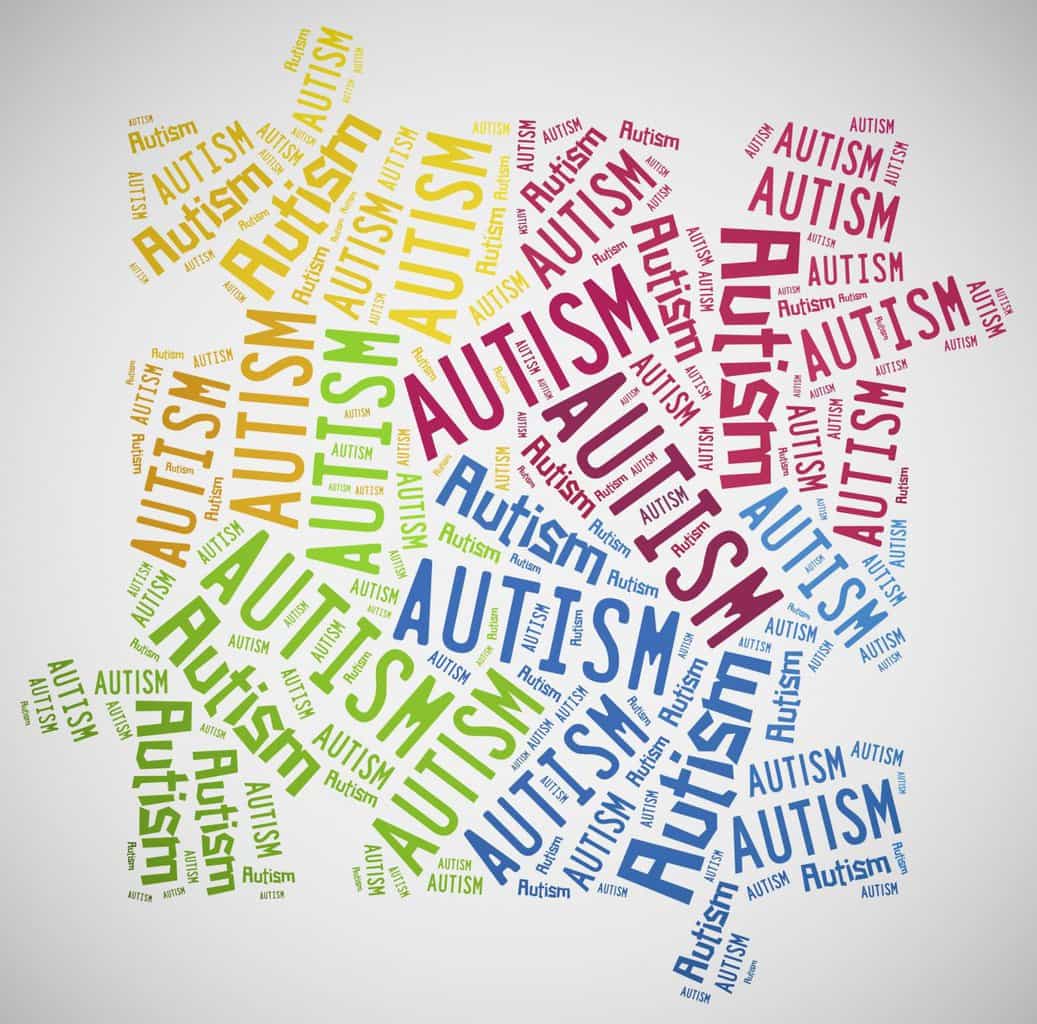 Autism Spectrum Disorder (ASD) is hugely variable. People with ASD can have opposing symptoms. There are children with ASD who don’t like to be squeezed and cannot even tolerate a handshake—others crave the sensation so badly they bump their bodies into others. Sometimes individuals with ASD are so high functioning, people don’t immediately realize there is something different about them. Other times, they are unable to speak or take care of their physical needs. The futures of individuals with ASD can vary as much as their symptoms. Just like neurotypical individuals, the future of people with ASD depends on their strengths, passions and skillsets.
Autism Spectrum Disorder (ASD) is hugely variable. People with ASD can have opposing symptoms. There are children with ASD who don’t like to be squeezed and cannot even tolerate a handshake—others crave the sensation so badly they bump their bodies into others. Sometimes individuals with ASD are so high functioning, people don’t immediately realize there is something different about them. Other times, they are unable to speak or take care of their physical needs. The futures of individuals with ASD can vary as much as their symptoms. Just like neurotypical individuals, the future of people with ASD depends on their strengths, passions and skillsets.
It is important to understand that a diagnosis of ASD does not mean that your child cannot make friends, date, go to college, get married, become a parent, and/or have a satisfying lucrative career. Just as typically developing children need to develop skills to become successful adults, children with ASD require the same; however it’s important to note that this process often looks different than what a typically developing child experiences. It is widely understood at this point that children with ASD have better outcomes when they get diagnosed early and are inundated with evidence-based therapies to help them develop to the skills necessary to be functional and successful children and adults. The most well-known effective treatment to help children with ASD develop functional life skills is Applied Behavioral Analysis. Depending on their areas for growth children can also benefit from Speech Therapy, Physical Therapy and Occupational Therapy.
Autism and Marriage:
A diagnosis of ASD does not need to prevent anyone from getting married. Just as in any relationship, individuals with ASD need partners who are understanding and respectful of their needs. Sometimes they may need to have a more direct communication style in which partners clearly explain what they want and need instead of waiting for them to intuit it. This is not necessarily limited to couples where one individual has ASD. All couples need to find their own mode of communication that works for them. An experienced couples therapist can often help adults with ASD to navigate a romantic relationship. In fact, couples therapy techniques already focus on teaching couples to take turns talking and make sure they understand each other, and are not created with ASD in mind. Below you can find some essays written by married adults with ASD to get a clearer picture on how this can work:
- http://offbeathome.com/adult-with-autism/
- https://www.autismspeaks.org/blog/2015/12/14/living-autism-and-having-wife-shows-you-unconditional-love
- https://musingsofanaspie.com/aspergers-and-marriage/
Autism and Careers
The skills an individual with ASD has will impact what kind of career they can explore. Of course, this is true of the general population as well. There are several extremely successful individuals with ASD who have written about this.
Dr. Temple Grandin, perhaps the most famous individual with ASD today has some excellent advice for choosing a career when one has ASD based on individual thinking style.
Dr. Grandin was able to find a career that allowed her to exercise her unusual thinking style and passion. She has revolutionized how slaughterhouses function today, humanizing and expediting the process in a way a neurotypical person would likely not have been able to imagine.
John Elder Robinson, in addition to being a very successful author, was able to use his “aspergian strengths” in a career in technology. Most notably, he built the trick guitars used by the band “kiss”. His autobiography “Look Me in the Eye” is an excellent portal into his unique mindset and paints a clear portrait of a functional adult living with ASD.
For individuals with ASD who cannot live independently, job opportunities exist as well. Multiple not for profit organizations in New York alone exist with the sole purpose of helping to find people with various challenges gainful employment opportunities. Some examples are here:
- https://careerssupportsolutions.org/
- https://www.arcwestchester.org/employ?gclid=CjwKCAjwssvPBRBBEiwASFoVd3jrbAUxjPbrIEd6vtYRfI7_5Edq-G8oLe83wFGPodk1O3QqpDjtthoCBK8QAvD_BwE
- https://experiencecle.com/our-work-2/
There are also halfway homes for people who want to live independently but need some extra assistance. Autism speaks has a resource guide to learning more about this:
https://www.autismspeaks.org/family-services/housing-and-community-living
If you have more questions, or need assistance coping with your child’s ASD diagnosis, you can call 646-450-6210 to schedule a consultation with one of our experienced Clinicians.
Written by Sudha Ramaswamy, PhD, BCBA-D, LBA
What is Bullying?
Bullying is unwanted, aggressive behavior that involves an imbalance of power. It also involves problem behaviors that are repeated or have the potential to be repeated over time. Children who bully use their power, such as popularity or physical strength to intentionally harm or control others. There are many different types of bullying-physical, social/relational, and verbal are the primary examples.
Examples of Bullying:
Some examples of physical bullying involves hitting a person’s body or possessions, taking someone’s belongings, making inappropriate hand gestures or destroying property. Examples of social/relational bullying are: actions which have the intent of hurting someone’s reputation, embarrassing someone, leaving someone out or telling others not to be friends with that person. Verbal bullying involves (but is not limited to): threatening to cause harm, teasing, and name calling.
Common Traits of Bullies:
Children who are bullies tend to control other people and are easily frustrated. They often demonstrate a lack of empathy are frequently unsympathetic to anyone’s needs. Children who are bullies blame the victim for his or her own behavior by saying things like, “If that dork didn’t look so ridiculous, I wouldn’t have to punch him.”. Children who bully have difficulty following rules and have very little respect for authority. They tend to view violence in a positive way and often have other friends who bully.
Signs Your Child May be Bullying Others:
Children who bully often blame others for their problems and they don’t accept responsibility for their actions. They are often competitive and worry about their reputation and often get into physical or verbal fights and have friends who bully others. They often get sent to the principal’s office or to detention frequently and may have unexplained extra money or new belongings.
What are the Characteristics of Children Who are at Risk of Being Bullied:
These children are seen as different (overweight, new kid at school, different clothing, cannot afford to wear what others do, disability, medical condition). They may be less popular than others and have few friends. Children who are at risk for being bullied are often anxious, or have low self-esteem and are perceived as weak. They also frequently do not get along with others.
Why Children who are Bullied Often Don’t Seek Assistance:
Children are often afraid they are tattling. They have learned that “telling on peers” is not favorable and often may fear retaliation from the kid who bullied them. Bullying can also bring about shame and as a result, children may not want adults to know what is being said about them, whether true or false. They may also fear that adults will judge or punish them for being weak. It is also feasible that bullied children have bought into a belief that bullying is part of growing up.
Signs that Your Child is Being Bullied:
Children who are bullied may show signs of unexplained injuries and lost or destroyed belongings such as clothing or books. They may complain of frequent illness and parents may notice changes in eating habits such as skipping meals or excessive eating. Parents may also notice other changes in habits such as insufficient sleep, poor grades, and loss of interest in school.
What You Can Do for the Bullied Child:
The more supportive a parent can be for the bullied child, the better. Parents should actively listen and convey support. Parents should repeat the child’s thoughts and feelings and use phrases like “I know you’re feeling concerned” to help the child know he/she is being understood. Offer assurance without making him or her feel like they are trying to talk him/her out of feeling that way or dismissing the child’s feelings. Let the child know it is not his/her fault and that there are things strategies to address the situation. Review strategies to use if someone teases or bullies. Ignoring the bully and simply walking away or using humor to combat aggressiveness might get the bully to stop. Of paramount importance is for the parent to report bullying to school personnel.
What to Do if You Know Your Child is Bullying Others:
Teach your child that bullying is not appropriate behavior and that there will be consequences if it continues. If punishment consists of taking away privileges, be sure that the consequence is consistent. Follow through on consequences, for example, if your child bullies other kids through text messages, remove phone privileges for a period of time. If your child emits aggressive behavior at home, do not allow it to continue. Teach more appropriate ways to respond, such as walking away or breathing exercises to cool off. Teach kids to treat others with kindness–teach your child that it is wrong to make fun of differences (e.g., appearance, special needs, gender). Be a social detective-look for insight into the factors that may be influencing your child’s behavior in the school environment. Do other kids bully? Who are my child’s friends? What kinds of pressures do the children face at school? Involve your child in conversations about these issues. Include your child in activities outside of school so that your child can meet and develop friendships with other kids outside of the school setting. Parents can encourage good behavior-positive reinforcement is the single most effective tool that a parent can use to change behavior. Catch your child being good — and when they handle situations in ways that are positive, and let them know! Be a good model–consider how you handle conflict. If you behave aggressively, chances are high that your model will be imitated. When conflicts arise in your own life, be open about the frustrations you have and how you cope with your feelings.
Create and Be Part of a Compassionate School Community:
Parents can help create a compassionate school community by partnering with the school administration. It would be helpful to become familiarized with the anti-bullying policy at the child’s school. If a teacher observes bullying in a classroom, the teacher should record that the event occurred and inform relevant school administrators so the incident can be further investigated. Children and parents can be part of the solution by being encouraged by administration to inform adults about problems as they occur. Parents, teachers, and school administrators can help children engage in positive behavior and teach them skills so that they know how to intervene when bullying occurs. Additionally, for children who have a hard time establishing friendships, school staff can facilitate friendships or provide special responsibilities to complete during lunch and recess so that children do not feel isolated or at risk for being bullied.
 Self-injury is a non-suicidal act that involves deliberate, self-inflicted damage to the body. There are various forms of self-injury, but the most common include:
Self-injury is a non-suicidal act that involves deliberate, self-inflicted damage to the body. There are various forms of self-injury, but the most common include:
- intentional carving or cutting of the skin
- subdermal tissue scratching
- burning oneself
- banging or punching objects or oneself with the intention of hurting oneself
- embedding objects under the skin
According to the National Alliance on Mental Illness (NAMI), “Self-injury is not a mental illness, but a behavior that indicates a lack of coping skills. Several illnesses are associated with it, including borderline personality disorder, depression, eating disorders, anxiety or posttraumatic distress disorder.” Although self-harm is not a mental illness itself, it does indicate significant emotional distress often resulting from overwhelming anger, frustration, or pain. When a person has not learned more appropriate ways of expressing these emotions or has been taught to hide their feelings, self-injury may provide a means of emotional release.
Who most commonly engages in self-injury?
According to NAMI, “Self-harm occurs most often during the teenage and young adult years, though it can also happen later in life. Those at the most risk are people who have experienced trauma, neglect or abuse.”
What are the signs that someone is engaging in self-injury?
The most noticeable signs of self-injury are changes to the body including, but not limited to:
- Scars, such as from burns or cuts
- Fresh cuts, scratches or other wounds
- Bruises
- Hair loss or bald spots
- Broken bones
- These signs might not always be noticeable though as the individual who is engaging in self-injury may try to hide them by wearing long sleeves or pants (even in hot weather) and may also harm areas of the body that are more hidden in nature (e.g., inner thighs). Therefore, it is important to look out for behavioral changes as well such as:
- Keeping sharp objects on hand
- Spending a great deal of time alone
- Claiming to have frequent accidents or mishaps
Are there treatments available for self-injury?
Yes, there are effective treatments for self-injury that focus on helping the individual feel in control again. Psychotherapy is an essential component of any treatment plan, as it will help the individual develop more appropriate coping skills and means of expressing their emotions. The first step though is scheduling a diagnostic interview with a psychiatrist, psychologist or other mental heath care provider who can accurately diagnosis the underlying cause of the self-injury. Based on this diagnosis, the right treatment plan can be developed and may include one (or more) of the following approaches:
- Psychodynamic therapy focusing on exploring past experiences and emotions
- Cognitive behavioral therapy focusing on recognizing negative thought patterns and increasing coping skills
- Dialectical behavioral therapy can help a person learn positive coping methods
Where can I find more information about self-injury?
- http://www.selfinjury.bctr.cornell.edu/resources.html
- http://sioutreach.org/
- https://www.healthyplace.com/abuse/self-injury/self-injury-homepage/
- https://twloha.com/find-help/help-by-topic/self-injury/
Resources used for this blog:
http://www.selfinjury.bctr.cornell.edu/about-self-injury.html
http://www.timberlineknolls.com/mood-personality/self-injury/signs-effects/
https://www.nami.org/Learn-More/Mental-Health-Conditions/Related-Conditions/Self-harm
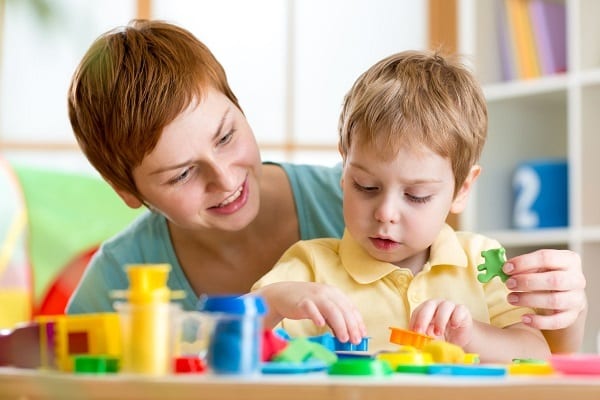
ABA Therapy: Effective Strategies for All Learners
What is ABA therapy?
ABA stands for Applied Behavioral Analysis. It’s a powerful approach that employs scientific behavioral principles to shape a learner’s environment, facilitating efficient and effective skills development. ABA therapy tailors its techniques to meet the unique needs of every learner. But is ABA therapy exclusive to autism, and how can it benefit individuals on the autism spectrum? Let’s dive into these questions and more.
The Universality of ABA:
The principles of behavior are universal and apply to all individuals. While ABA is not exclusive to autism, it is one of the most popular therapies for supporting those on the autism spectrum. ABA therapy relies on evidence-based treatments, making it exceptionally effective for learners with Autism Spectrum Disorder (ASD). People on the spectrum often require an individualized approach and more personalized attention. ABA’s strength lies in customizing treatment to optimize success, focusing on individual needs rather than applying a one-size-fits-all approach.
Unlocking the Potential:
How does ABA therapy benefit individuals with autism? ABA therapy is about manipulating environmental variables to foster learning. Individuals on the autism spectrum may have unique sensitivities to crowds, sounds, or textures. They might need additional motivation to engage in activities like communication. ABA achieves this by meeting learners where they are, adapting instruction to suit their specific requirements rather than expecting a child to adapt to how a skill is being taught.
The True Purpose of ABA:
Contrary to misconceptions, the main goal of ABA is not to make individuals with autism indistinguishable from their peers. Rather, it aims to impart socially significant skills. Skills that would enhance a child and family’s daily life. These skills include functional and appropriate communication, emotional regulation, and even toilet training. The list of skills and behaviors that can be addressed through ABA is extensive.
Is Choosing ABA right for your family?
To determine if ABA is the right fit for your family, consistency is vital and key to a successful outcome. Children, with or without Autism Spectrum Disorder(ASD), thrive when expectations are consistent across all environments and caregivers. ABA therapists want to work closely with not just the children but families, and caregivers to ensure everyone plays a part in the child’s success. This consistency is particularly important when dealing with behaviors like “extinction,” where certain undesired behaviors are no longer reinforced.
Extinction a behavior term, is the process of removing the consequences and maintaining a response. In other words, if a child is engaging in a behavior you do not want them to engage in behavior you do not want them to engage in for a reason, do not fulfill that reason. For instance, if a child screams for candy at the store, not buying the candy extinguishes the behavior. However, maintaining consistent expectations is crucial. If parents give in, behaviors can return more forcefully. If you can ensure consistent expectations with your therapist, ABA therapy is likely a good fit for your family. If you foresee challenges in maintaining this consistency, ABA may not be the right choice.
Pros and Cons of ABA Therapy:
- Pros of ABA: ABA therapy is research-driven and highly effective, involving data analysis to monitor skill acquisition rates. It allows for quick adjustments to optimize learning. Board Certified Behavioral Analysts undergo rigorous training, Offering high-quality services tailored to specific learner needs.
- Cons of ABA: While adaptable, some ABA procedures must be followed strictly, which can be challenging for children and their families. Certain procedures like extinction can be emotionally taxing.
Behaviors and Skills Addressed Through ABA:
ABA therapy covers a wide range of behaviors and skill areas, including:
- Speech and functional communication
- Pre-academic and Academic Skills
- Daily Living Skills
- Following Directions
- Toileting Skills
- Social Skills
- Play Skills
- Eating Habits
- Safety Skills
- Respecting Limits
- Sleep Patterns
- Self Regulation
- Executive Functioning
- Tantrums and Aggressive Behaviors
- Attention Skills
- Fine and Gross Motor Skills
- Sensory Input Management
As the rates of Developmental Disabilities, including autism, continue to rise, early intervention and comprehensive assessments become increasingly essential. ABA therapy, with its personalized approach, can make a significant impact on a child’s life. It’s a versatile tool for helping learners of all types achieve their full potential.
Frequently Asked Questions (FAQs)
What is ABA therapy, and who can benefit from it?
ABA stands for Applied Behavioral Analysis, a versatile approach that helps learners of all types. While it’s not exclusive to autism, it’s highly effective for individuals with Autism Spectrum Disorder (ASD). ABA customizes treatment to meet unique needs, making it a valuable tool for many.
What are the main goals of ABA therapy?
The main goals of ABA therapy are to impact socially significant skills that enhance a child and family’s daily life. These skills include functional communication, emotional regulation, and more. ABA can address an extensive list of skills and behaviors.
How is ABA therapy different from other therapy approaches?
ABA therapy is distinct because it is evidence-based, focusing on observable behavior and the manipulation of environmental variables. It uses data analysis to tailor strategies, making it highly effective and adaptable.
Is ABA therapy only for children, or can it benefit adolescents and adults as well?
ABA therapy is suitable for individuals of all ages. It is not limited to children and can be effective for adolescents and adults with developmental and behavioral challenges.
Can ABA therapy be conducted at home, in a clinical setting, or both?
ABA therapy can be conducted in any setting, depending on the individual’s needs and goals. Some sessions may take place at home, while others may occur in a clinical or school-based setting.

Exploring Dialectical Behavior Therapy (DBT) and its Effective Emotional Management Techniques
Dialectical Behavior Therapy(DBT) is a therapeutic approach designed to equip patients and their families with strategies to cope with distressing emotions and navigate challenging situations effectively. Life often presents us with circumstances beyond our control, which can be hard to endure and leaves us feeling emotionally overwhelmed. DBT’s TIPP skills offer valuable tools to help regulate individuals’ emotions, fostering clearer thinking and problem-solving.
Understanding TIPP skills:
TIPP, an acronym for four powerful techniques, is designed to help individuals regain emotional equilibrium in demanding situations. These skills are important in promoting emotional regulation and improved decision-making:
T stands for Tip The Temperature:
To rapidly calm down, try dipping your face in a bowl of cold water or applying a cold pack to your eyes and cheeks for at least 20 seconds. This prompts the mammalian diving reflex, a natural response that occurs in all mammals, including humans when their faces come into contact with cold water.
The reflex triggers a shift in body chemistry, leading to an immediate drop in heart rate and activation of the parasympathetic nervous system, inducing a relaxation response. Ensure that the water’s temperature remains above 50 degrees Fahrenheit.
I stands for Intense Exercise:
Engage in vigorous physical exercise, even if that means for a short period of time. Intensive physical activity can help expel the negative energy that often accompanies periods of intense emotions. Activities such as running, brisk walking, or doing jumping jacks release endorphins, which combat negative emotions like anxiety, sadness, or anger.
P stands for Paced Breathing:
Stimulate your parasympathetic nervous system by practicing deep abdominal breathing. Slow down the pace of your inhalations and exhalations, aiming for an average of five to six breaths per minute. Focus on exhaling more slowly than you inhale for best results.
The Last P stands for Paired Muscle Relaxation:
It can help if you add muscle relaxation to paced breathing. While breathing deeply and slowly, tense and relax each muscle group in your body. Pay attention to the difference between tension and relaxation as you move through each muscle group.
Building Emotional Resilience:
While TIPP skills may not yield immediate results, with practice, they can significantly enhance your ability to manage strong emotions, cope with challenging situations, and experience overall well-being. Consistent practice and guidance from a DBT therapist can be invaluable in mastering these skills. Many DBT therapy sessions include a focus on breathing exercises and progressive muscle relaxation to ensure correct skill application.
Dialectical Behavior Therapy offers a valuable toolbox of techniques, such as TIPP skills, to help individuals better manage their emotions and navigate life’s challenges. With dedication and the guidance of a DBT therapist, these skills can empower you to regain control over your emotional well-being.
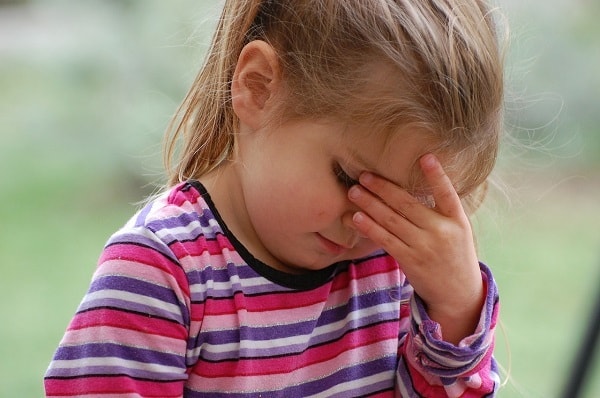 Anxiety is a natural, normal and harmless emotion. Anxiety becomes problematic when it begins to prevent or interfere with a child’s ability to engage in and enjoy daily activities. Anxiety disorders represent the most prevalent mental health disorder in children and teens, with approximately one in eight children experiencing an anxiety disorder.
Anxiety is a natural, normal and harmless emotion. Anxiety becomes problematic when it begins to prevent or interfere with a child’s ability to engage in and enjoy daily activities. Anxiety disorders represent the most prevalent mental health disorder in children and teens, with approximately one in eight children experiencing an anxiety disorder.
Children can experience anxiety disorders consisting of:
- generalized anxiety disorder separation anxiety disorder
- panic disorder
- specific phobias
- social anxiety disorder
- and selective mutism
Children can also experience related disorders of:
- obsessive compulsive disorder
- and posttraumatic stress disorder
While the causes of anxiety disorders are still being understood, they are known to be related to a combination of interacting biological and environmental risk factors.
Biological risk factors include:
- a genetic predisposition for anxiety
- neurobiological factors
- neuroendocrine factors
- preexisting medical conditions
- and preexisting psychiatric conditions
Early biological risk factors can present as behavioral inhibition in children. Behavioral inhibition is defined as an individual’s tendency to show fear and withdraw when faced with new or unfamiliar situations.
In addition to biological risk factors, anxiety disorders have also been associated with environmental factors. These include exposure to stressful life events and specific care-provider behaviors in response to environmental cues, such as modeling of anxiety and over-control. It is important to note that environmental factors alone do not cause anxiety disorders in children. These environmental factors are believed to interact with biological vulnerabilities in the development and maintenance of anxiety disorders.
There are many evidence-based treatments that have been developed to treat anxiety disorders in children. These include cognitive behavioral therapy, medication management or a combination of both.
Resources:
 Growth Mindset is the idea that your talents and abilities can be improved through hard work and perseverance. When individuals with a growth mindset are presented with a challenge, they use problem solving strategies to overcome, and successfully complete their task. Completing these challenges can be long term or short term accomplishments.
Growth Mindset is the idea that your talents and abilities can be improved through hard work and perseverance. When individuals with a growth mindset are presented with a challenge, they use problem solving strategies to overcome, and successfully complete their task. Completing these challenges can be long term or short term accomplishments.
Dr. Carol Dweck, a Professor of Psychology at Stanford University, is known for her work on the mindset psychological trait. Her primary research includes motivation, personality, and development. Dweck explains three common misconceptions about growth mindset:
- Growth mindset is not just having a positive outlook or being open-minded.
- Rewarding just children’s or adults’ effort is not supporting growth mindset. Rewarding the process and strategies taken to achieve a goal supports growth mindset.
- Learning significant and useful lessons, even if the original goal hasn’t been accomplished, is still just as important to celebrate.
The science behind a growth mindset:
Psychologist Jason Moser studied the neural mechanisms that operate in people’s brains when they make mistakes. According to his study, those with a growth mindset had considerably higher brain activity when making a mistake, than those who show a fixed mindset. Their brain signaled conscious attention to a mistake and as a result grow a synapse, a brain spark. The study found that individuals with a growth mindset had a greater awareness of their mistakes, and were more likely to go back and correct those mistakes.
What does this mean for our children?
In a study conducted by Lisa Blackwell, Kali Trzesniewski, and Carol Dweck, they measured two groups of 7th graders. Students in group 1 were introduced to intervention lessons that taught growth mindset, while the students in group 2 did not receive these lessons. These lessons taught students to push out of their comfort zone to learn something new and difficult. The neurons in their brain form new, stronger connections over time and as a result become smarter. Students who were not taught this growth mindset, group 2, continued to show declining grades over their school transition. Students who were taught this lesson, group 1, showed a sharp rebound of their grades.
A majority of children are motivated to get that A+ on their assignment, or a shout out from their teacher during a lesson for getting an answer correct. Children have been raised in an environment in which getting the right answer is the only way to achieve success. At times when children do not receive the accurate solution, they feel defeated and give up. They begin to reflect on themselves and think that there is nothing they can do to get the right answer because they are just not smart enough. As children grow to become adults, this mindset prevents them from being able to partake in opportunities that allow them to become successful in their career.
We need to praise wisely. This means praising the process that kids engage in, not just their intelligence. We want to highlight their effort, strategies, focus, perseverance, and improvement. Growth mindset creates individuals who become resilient, don’t back down to a challenge, and outperform others in their careers.
Resources:
https://hbr.org/2016/01/what-having-a-growth-mindset-actually-means
“Mind Your Errors” by Jason Moser, Hans Schroder, Carrie Heeter, and Tom Moran, 2011
“Implicit Theories of Intelligence Predict Achievement Across an Adolescent Transition: A Longitudinal Study and an Intervention” by Lisa Blackwell, Carol Dweck, and Kali Trzesniewski, 2007
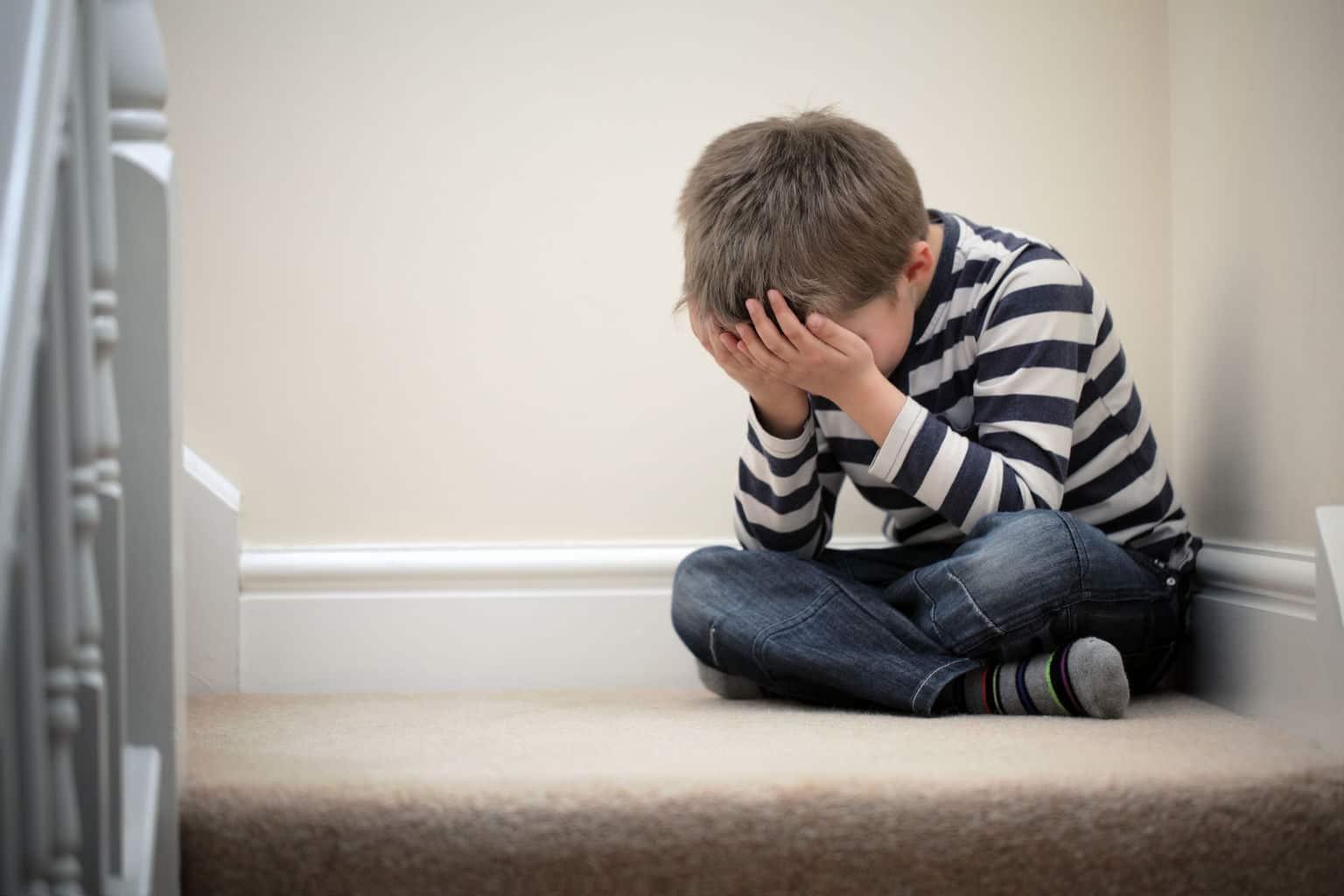 The short and simple answer to this question is “yes,” but when assessing PTSD in children it is important to understand more about it, as its signs and symptoms in children often present differently than they do in adults.
The short and simple answer to this question is “yes,” but when assessing PTSD in children it is important to understand more about it, as its signs and symptoms in children often present differently than they do in adults.
What is a traumatic event?
According to the National Child Traumatic Stress Network (NCTSN), “A traumatic event is a scary, dangerous, or violent event” in which there is an immediate threat to oneself or to a loved one, and is often followed by serious injury or harm. During a traumatic event one experiences terror, helplessness, or horror at what is being experienced and the inability to protect oneself or others.
There are a variety of events that may be experienced as being traumatic for children and teens, some of which include:
- Accident
- Injury
- Serious illness
- Fires
- Crime
- Community violence
- Combat injury of a loved one
- Death of a loved one
- Violence within the family
- Abuse
- Neglect
- Homelessness
- School violence
- Natural disaster
- Act of terrorism
Fortunately, even when children experience traumatic events, they do not always develop traumatic stress. According to US Department of Veteran Affairs, the development of traumatic stress is dependent on the following factors:
- How severe the trauma is
- How the parents react to the trauma
- How close or far away the child is from the trauma
Children who experience more severe trauma and are the closest to it tend to develop more traumatic stress, while those that have more familial support and whose parents are less upset by the trauma will experience less.
Signs & Symptoms of Traumatic Stress
Indications that a child is experiencing traumatic stress tend to vary based on the child’s age and level of resilience. For this reason, it is important be aware of the many different signs and symptoms that may indicate the presence of traumatic stress. According to NTCSN these include the following:
Preschool Children:
- Feel helpless and uncertain
- Fear of being separated from their caregiver
- Cry and/or scream a lot
- Eat poorly and lose weight
- Regression (e.g., return to bedwetting and/or baby talk)
- New fears
- Nightmares
- Recreate the trauma through play
- Are not developing to the next growth stage
- Have changes in behavior
- Ask questions about death
Elementary School Children:
- Become anxious or fearful
- Worry about their own or others’ safety
- Become clingy with a caregiver or teacher
- Experience guilt or shame
- Repeatedly tell others about the traumatic event
- Become upset if they get a small bump or bruise
- Difficulties concentrating
- Experience numbness
- Have fears that the event will happen again
- Have difficulty sleeping
- Change in academic performance
- Become easily startled
Middle & High School Children
- Feel depressed and alone
- Discuss the traumatic events in detail
- Develop eating disorder and self-harming behaviors (e.g., cutting)
- Start using or abusing alcohol and/or drugs
- Become sexually active
- Feel like they’re going crazy
- Feel different than everybody else
- Risky behavior
- Sleeping difficulties
- Avoidance of places that remind them of the event
- Changes in behavior
- Say they have no feeling about the event
What do I do if I suspect that my child has PTSD?
Caregivers can do many things to help their children including listening to them, reassuring them of their safety, telling them that it is not their fault, being patient with the fact that the healing process may take longer than expected, and maintaining as much consistency in the routine and home environment as possible. It is also important that parents assess their own reactions to the traumatic event and their own trauma history, as these factors will surely affect their reactions to their children’s difficulties. If a child’s distress persists for several weeks, it may become necessary to consult with a mental health professional who will help the child process the trauma and regain a sense of safety and security.
Resources used for this blog:
https://www.ptsd.va.gov/public/family/ptsd-children-adolescents.asp
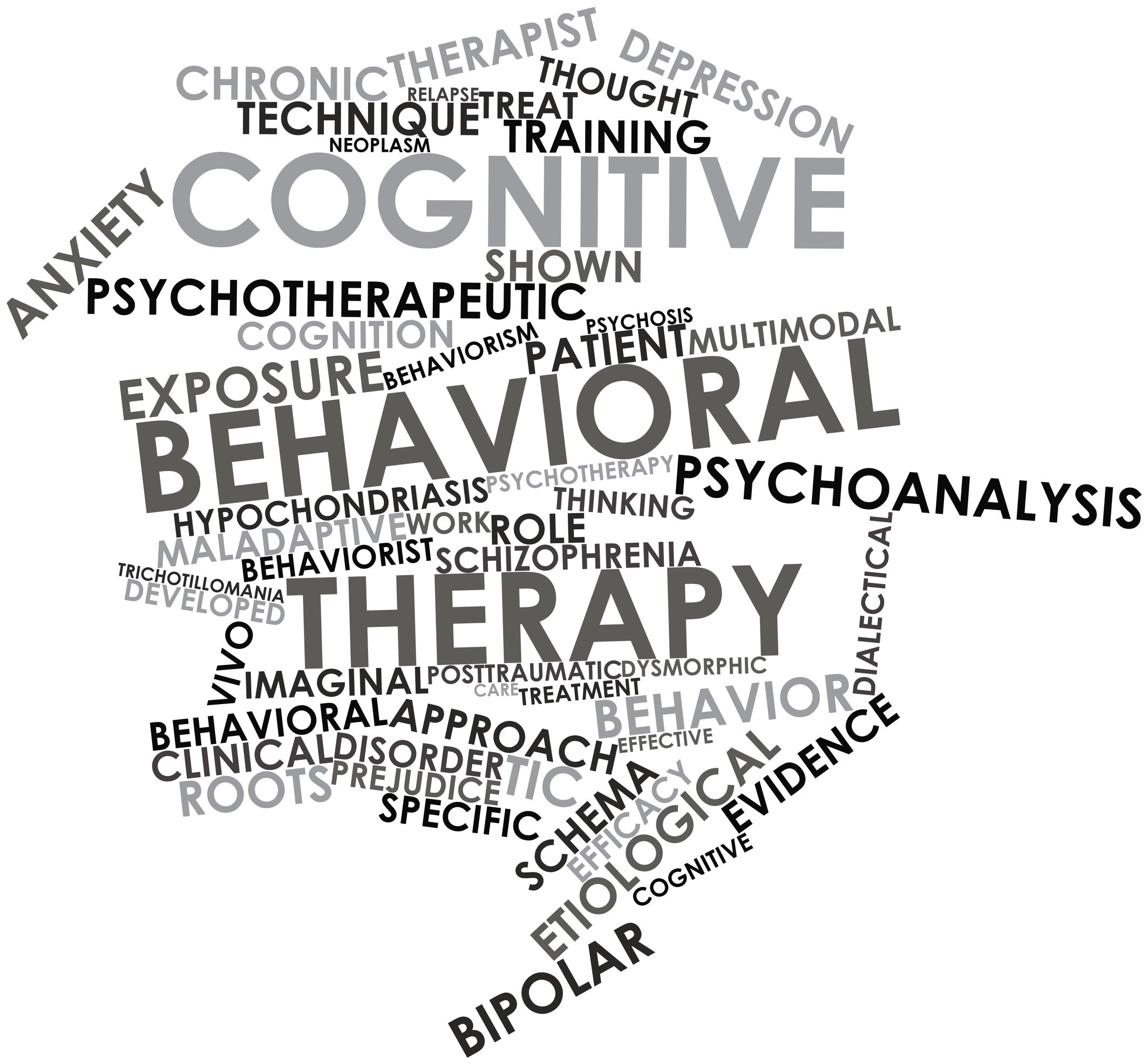 Sifting through the alphabet soup of psychotherapy treatments can often be bewildering and overwhelming. The rise of evidence-based psychotherapies (i.e., treatments that have strong research support) has had a tremendous impact on the value of treatment provided by practitioners; however, it has also had the unintended consequence of confusing patients. Two very common (but distinct) evidence-based psychotherapies that can be difficult to distinguish are Cognitive Behavioral Therapy (CBT) and Dialectical Behavior Therapy (DBT). Cognitive Behavioral Therapy is one of the most widely researched, validated, and practiced psychotherapy treatments. CBT therapies focus on the relationship between thoughts, feelings, and behaviors in an attempt to help patients gain control over unwanted thoughts and feelings so that they can better manage harmful or unwanted behaviors. Dialectical Behavior Therapy (DBT) is a type of CBT that was developed specifically for individuals with Borderline Personality Disorder. Although DBT incorporates some of the components of traditional CBT, DBT is distinguished by several factors from CBT. It is always helpful to consult with a psychotherapist when attempting to decide between different treatments; however, the table below can help to provide some clarity in how CBT and DBT differ.
Sifting through the alphabet soup of psychotherapy treatments can often be bewildering and overwhelming. The rise of evidence-based psychotherapies (i.e., treatments that have strong research support) has had a tremendous impact on the value of treatment provided by practitioners; however, it has also had the unintended consequence of confusing patients. Two very common (but distinct) evidence-based psychotherapies that can be difficult to distinguish are Cognitive Behavioral Therapy (CBT) and Dialectical Behavior Therapy (DBT). Cognitive Behavioral Therapy is one of the most widely researched, validated, and practiced psychotherapy treatments. CBT therapies focus on the relationship between thoughts, feelings, and behaviors in an attempt to help patients gain control over unwanted thoughts and feelings so that they can better manage harmful or unwanted behaviors. Dialectical Behavior Therapy (DBT) is a type of CBT that was developed specifically for individuals with Borderline Personality Disorder. Although DBT incorporates some of the components of traditional CBT, DBT is distinguished by several factors from CBT. It is always helpful to consult with a psychotherapist when attempting to decide between different treatments; however, the table below can help to provide some clarity in how CBT and DBT differ.
| Cognitive Behavioral Therapy (CBT) | Dialectical Behavioral Therapy (DBT) | |
| Conditions treated | Anxiety, Depression, Substance Use, Eating Disorders, Social Skills Deficits | Borderline Personality Disorder and Suicidal Behavior. There is also increasing evidence that DBT can be used to treat other conditions, including Eating Disorders. |
| Age ranges | CBT can be utilized with children, adolescents, and adults | DBT is well validated for adolescents and adults. Although new research is investigating the use of DBT in children, DBT is not currently commonly practiced with young or school aged children. |
| Treatment Modality | Typically, once weekly individual psychotherapy. | Once weekly individual psychotherapy, once weekly DBT skills group, and phone coaching (24/7 access to individual therapist for use in crisis situations to facilitate use of DBT skills and prevent hospitalization). |
| Length of time | Short-term and goal oriented psychotherapy. | Typically long-term, given the chronicity of problems treated. At minimum, completing DBT skills group takes approximately 6 months. |
| Primary goals | To identify unhelpful thoughts associated with challenging emotions and unwanted behaviors. To learn how to manage such thoughts and to increase helpful thoughts in order to fuel improved emotional control and adaptive behaviors. | To decrease suicidal thoughts and behaviors. To improve interpersonal relationships, develop emotion regulation strategies, and to generate an increased sense of acceptance of painful experiences/unwanted circumstances. |



